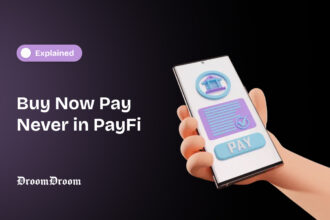Certainly, blockchain technology has continued to witness massive adoption across various sectors, including cryptocurrency. Since its emergence, its application offered limitless opportunities in these sectors. Notably, blockchain technology runs as a decentralized network which tracks and allows sharing of data within a digital ledger. It is worth mentioning that the application of the technology fosters security, traceability, transparency and trust of data in a given network. Blockchain interoperability has become necessary due to the expanding use cases of the technology. Owing to the aforementioned features, mainstream interest in blockchain has continued to soar. To know more about blockchain technology, click here.
Meanwhile, it is not news that the significance of blockchain technology in various sectors is huge. But, one of the major challenges associated with using blockchain is its fragmented nature. This is due to the fact that some of these technologies are incompatible with each other. When a blockchain network is incompatible with another, it will be grossly impossible for users of both networks to execute smart contracts across the chains. Thus, interoperability is an important feature every network must achieve.
The term “blockchain interoperability” is widely used to describe the ability of various blockchain networks to communicate with one another. By communicating with one another, these blockchain networks are able to share data among themselves. This thus means the economic activity unfolding on a particular blockchain network can be replicated on another compatible chain. According to our findings, the earliest contribution to the success of blockchain interoperability was the development of the Atomic cross-chain swap. The Atomic cross-chain swap fosters exchange of tokens around the boundaries of a given blockchain network.
We can also consider the emergence of cross-chain messaging protocols as another basic tenet of blockchain interoperability. According to our findings, these protocols support blockchains to read data from or write data to other blockchains. There is also cross-chain smart contracts. Here, the execution of smart contracts is made possible through the issuance of transactions on the destination chain. Another element of cross chain technology or blockchain interoperability is cross-chain oracles which fosters the transfer of data from one chain to another.
Blockchain Interoperability Networks
Here are the list of some of the blockchain protocols that have taken measures to achieving interoperability:
Cardano
In recent times, Cardano has shown remarkable commitment to achieving interoperability. Recall that the blockchain network kickstarted the development processes of smart contracts, leading to cross-chain bridges. Also, our findings show that Cardano uses a cross-chain oriented certificate for its solutions. Also, the network leverages sidechain solution to ensure that chains can interact and communicate. Although, it is only focused on PoS chains.
Polkadot
Polkadot is one of the leading blockchain networks that have taken steps towards interoperability. It utilizes parachains which depends on a central shard to function effectively. The central shard provides cross-chain communication and reliable security to each parachain running on the Polkadot network. How parachains function is not farfetched. It aids the passage of data as long as it has been verified to be correct and authentic by validators.
Cosmos
Similarly, Cosmos is not behind in the race to achieving full blockchain interoperability. Its developers developed the network based on the innovation of Bitcoin and Ethereum. The network adopts the Inter-blockchain communication (IBC) protocol to ensuring communication among chains. Although, these chains must be able to create certificates to achieve interoperability. According to our findings, certificates is the basic requirement for interoperability. These certificates are created by chains at the point of sharing information with one another.
Existing Interoperability Solutions
As discussed in the previous session, numerous protocols have been consistent in the quest to achieving interoperability. Although, most of them have chosen not to embrace uniform approaches to achieving the trend. Without further ado, the following are the various solutions developed to achieve blockchain interoperability:
Sidechains
Certainly, Sidechains are one of the notable interoperability and scalability solutions around. For sidechains to work effectively, it requires projects outside the mainnet to interact and communicate information from one chain to the other. As designed, each information conveyed from one chain to the other is verified by validators so as to aid easy integration of transactions.
Plasma Bridge
This is also another interoperability solution around. The Plasma Bridge is designed to use child chains in communicating transactions between different layer 1 networks. Although, this solution is layer 2 and runs on the Ethereum blockchain.
The Lisk Interoperability Solution
Our findings into the list of existing interoperability solutions leads us to the Lisk interoperability solution. This solution needs cross-chain messaging to interoperate effectively. Built on the paradigm of cross-chain certification, Lisk Interoperability Solution allows blockchain apps to scale. Its network is deeply rooted in Proof of Stake Consensus Algorithm, secured by elected delegates.
Pooled Security
The Pooled Security is an interoperability solution designed on the Polkadot network. This solution is notable for paving way for validators to confirm the correctness and accuracy of information conveyed to the destination chain.
Conclusion
It has been established that blockchain interoperability is a fundamental step towards bridging the gap between various networks. It helps to bring about sharing of resources, particularly by compatible chains. Our findings show that several networks have shown remarkable commitment to achieving interoperability. Certainly, the opportunities enveloped in cross-chain communication is limitless, hence must be prioritized for optimal users’ experience.




















